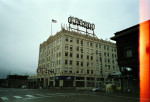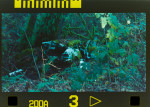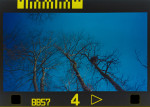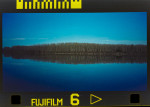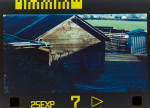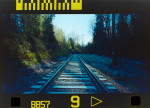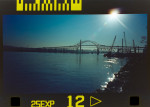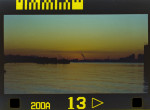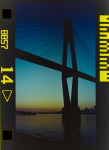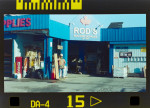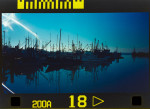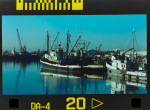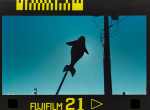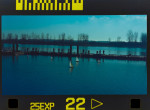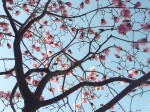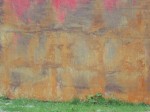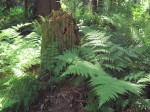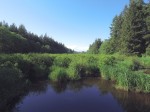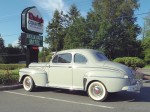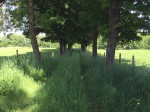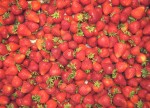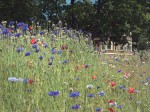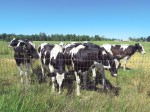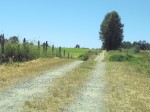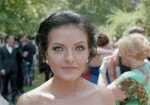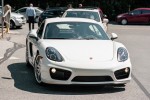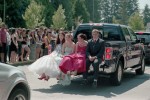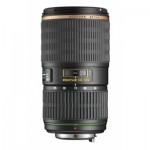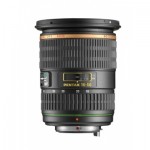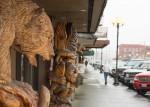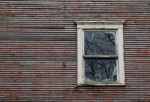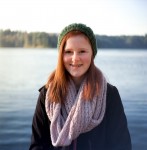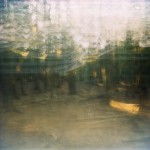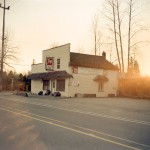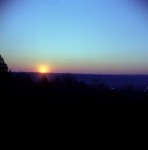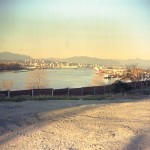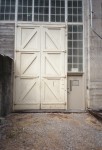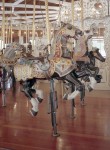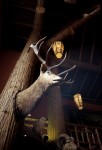Oct
14
2016
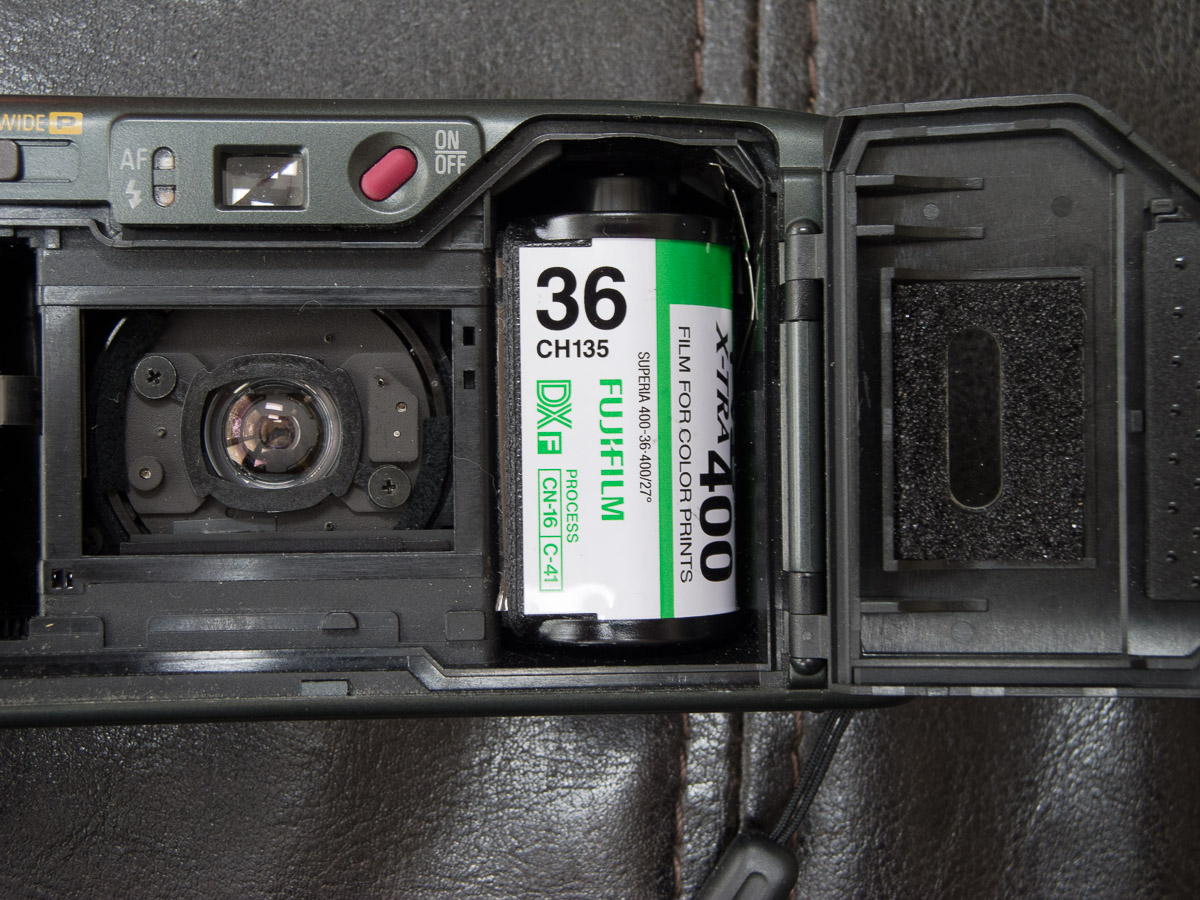
I seem to attract light leaks with cameras like ants to a picnic or mosquitos to the one spot you missed with the repelant. All very annoying. I’ve been using my Ricoh R1 for a few years now without any issues and have been very pleased with it. Ricoh R1 with Color Implosion Ricoh R1 great camera design
Ricoh R1 in Niagara but then this happened.
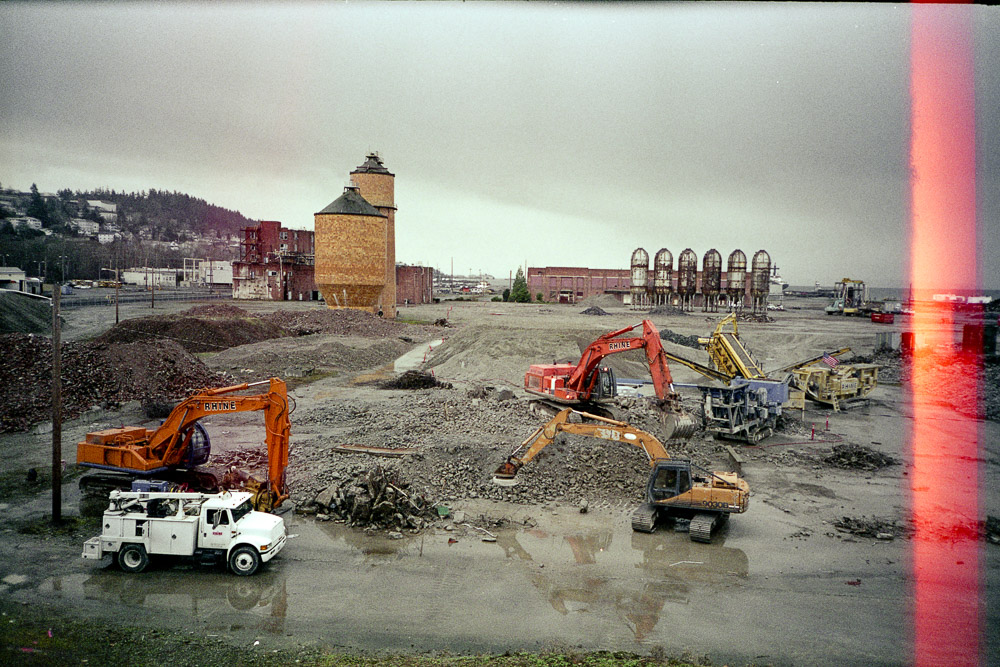
There are some clues in the leak: It repeats on every frame, it is near the edge, it is a narrow strip. This all points to the light seal around the film canister window.
Taking a close look at the seal I could see that it had begun to deteriorate. I decided to look for a donor camera that would fit the bill. It isn’t until you nead something that you realize how hard it is to find. The variety of shapes and sizes for the seal material was unexpected not to mention the different textures and methods of adhesion. Not finding a perfect match I decided rather than doing the sensible thing and just blacking out the film window I would deprive a cheap camera of its seal despite its poor fit. A little extra strip of foam shouldn’t hurt either.
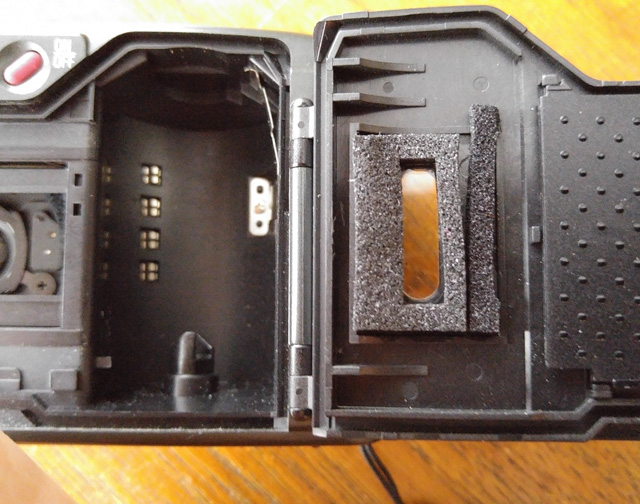
As you look at this you may be thinking well that looks unprofessional to which I would reply ‘It’s inside the camera and it does the job’
Here is the proof
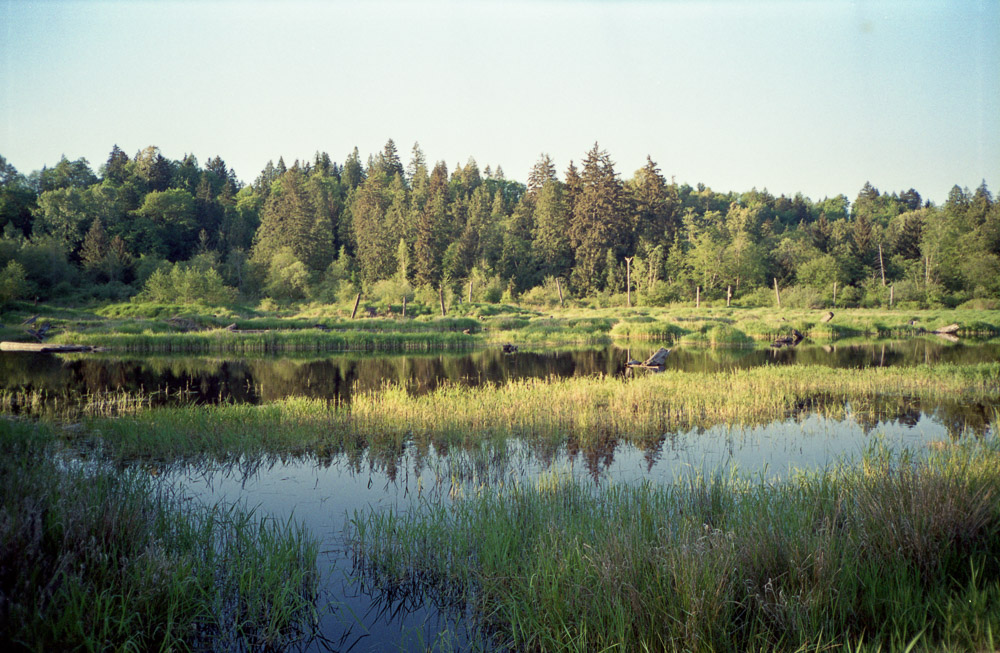
And here are a few images from before the seal transplant.
3 comments | posted in Cameras, Photography, Uncategorized
Sep
4
2016
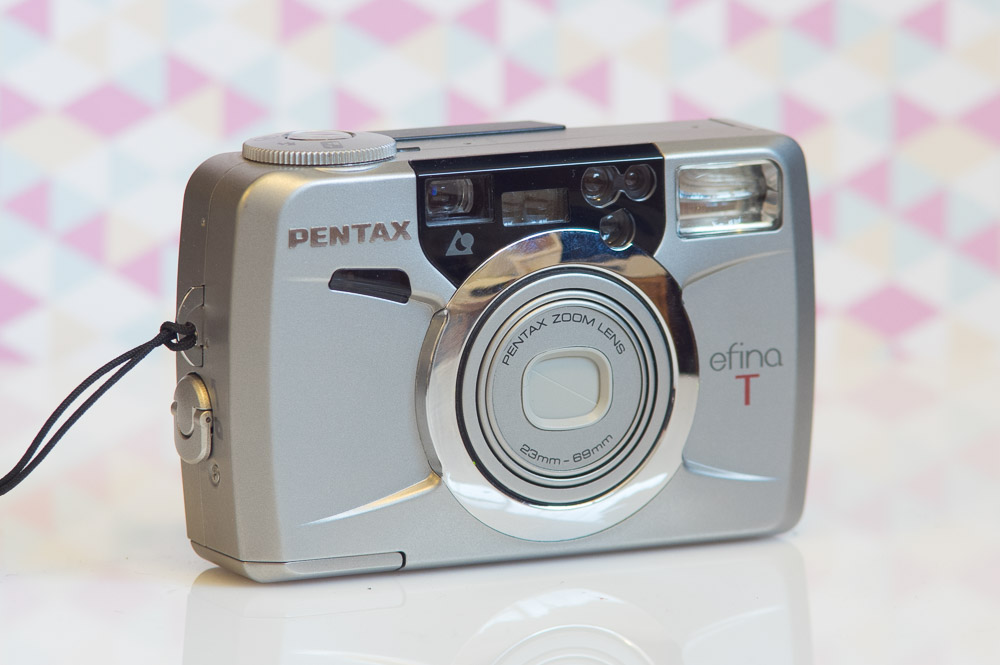
The Pentax efinaT is with out a doubt my favorite APS film camera. I’ve posted previously about its robustness here Pentax EfinaT
It’s just one of those cameras that seems like the peak of its type, its type being a small camera with a film format doomed for failure before it ever started of course. 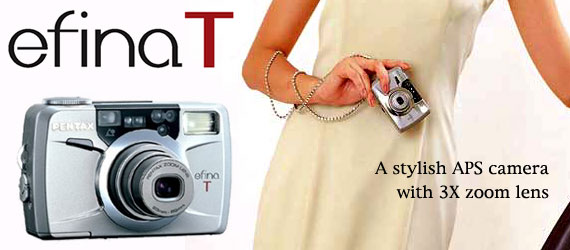
It’s 23-69mm lens gives a similar field of view as a 29-87mm lens on a 35mm film camera a very nice focal range and with the wide 16:9 aspect ratio its a fun camera to compose images with. The lens is a slow f5.6 to 9.9 comprised of 6 elements in 5 groups with two of them being aspherical. The slow speed of the lens shouldn’t be a surprise considering the compactness of it. The camera does weigh a hefty 195g due to its metal build. Interestingly it has a 5 point autofocus system and can also be set to spot focus. The close focus distance of 65cm can be used at any of the zoom settings.
I didn’t scan the film, I photographed it with my Pentax K-3 setup 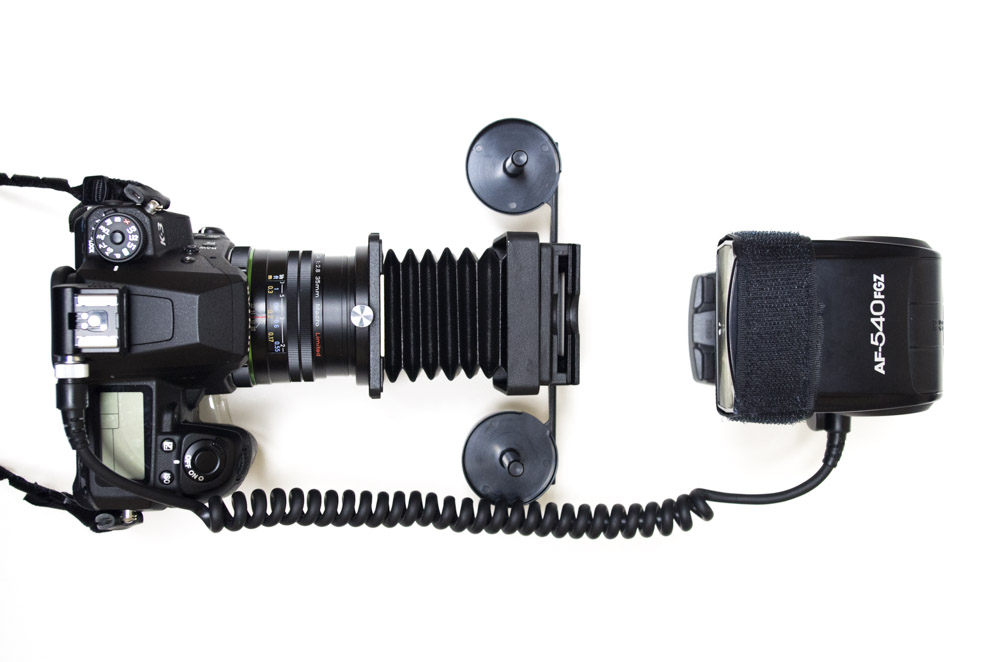
and then cropped and adjusted it in Lightroom. I also decided to leave the full area of the film visible just for the sake of it and so you can see the true image size captured.
The film itself is 24mm wide but the image area captured is only 16.7mm along that edge and 30mm along its length. It results in an image area 58% smaller than that of 35mmm film although it’s no less fun.
1 comment | posted in Cameras, Photography, Uncategorized
Mar
30
2016
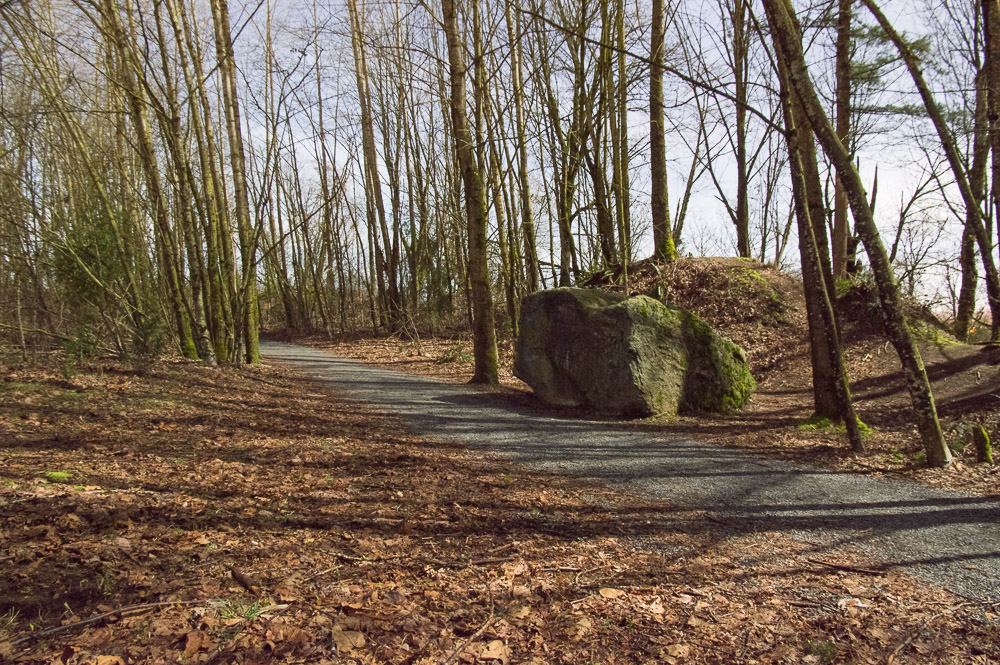
Image created in camera by moonlight using 4 30second exposures
One of the restrictions of many DSLR cameras is the limit of the longest exposure you can set is 30 seconds. This forces you to use bulb mode and a separate method of timing the exposure. There is an alternative though with newer Pentax cameras such as the K-3, K-3II and recently announced K-1. The way it is achieved is by changing the drive mode to interval composite. When set to this mode you also want to set the combining to additive so that all the exposures are summed together into one file. 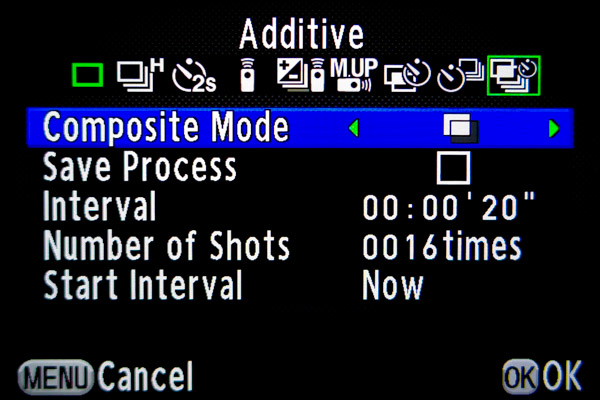
Next select an interval that is larger than the length of the exposure (This is a necessary setting). So if your going to use the 30 second maximum set this to around 33 seconds as that allows enough time for the exposure and processing of the file. After that it’s just a matter of selecting how many exposures or in this case how many times 30 seconds. For example 4 exposures would equal 2 minutes, 20 would result in a total of 10 minutes. There is a drawback and that is the necessary short gap between exposures. If there is something moving in a predictable way such as a star it’s going to leave a small gap where it isn’t recorded.

Here the multiple exposures have given my time to walk around in the scene and manual trigger a flash
Of course you can also use a shutter release cable in bulb mode and lock it down I just wanted to present an alternative method that is more automatic and controllable
Back before digital there really was only one way to create star trail images and that was to use a very long exposure and some trial and error. You can still do this but digital sensors behave differently than film over long periods and digital noise can become an issue. Some people have used a different method where they capture multiple images over a period of time perhaps hundreds of them and then stack them using computer software. The new Pentax K-1 apparently has a new composition mode that facilitates doing this in camera referred to as star streams (It turns out that that feature is actually a method of creating 4K time-lapse movies where the star trail ends fade out after a period of time, it will be interesting to see) but I wanted to share how you can do it now with the K-3 or K-3II
You still use the image composite drive mode but rather than setting the combining to ‘additive’ you want to set it to ‘bright’
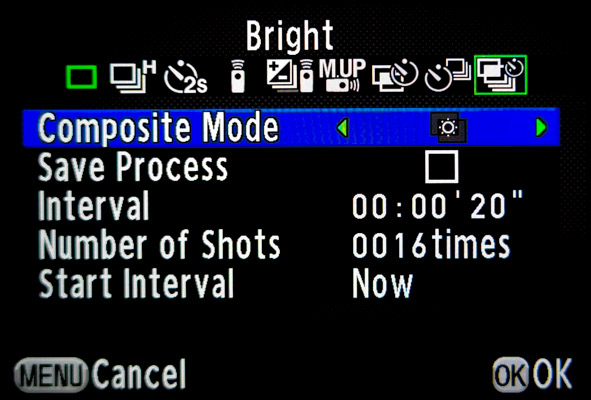
This way bright objects such as stars will be added to the exposure while darker things such as a foreground will be left dark. This is different from a long exposure because of the way the frames are combined and is most easily illustrated. The following pictures where both taken with settings of ISO 1600 f5.6 120 Seconds. The one on the left with bulb mode and the one on the right by combining 8 15 second exposures.
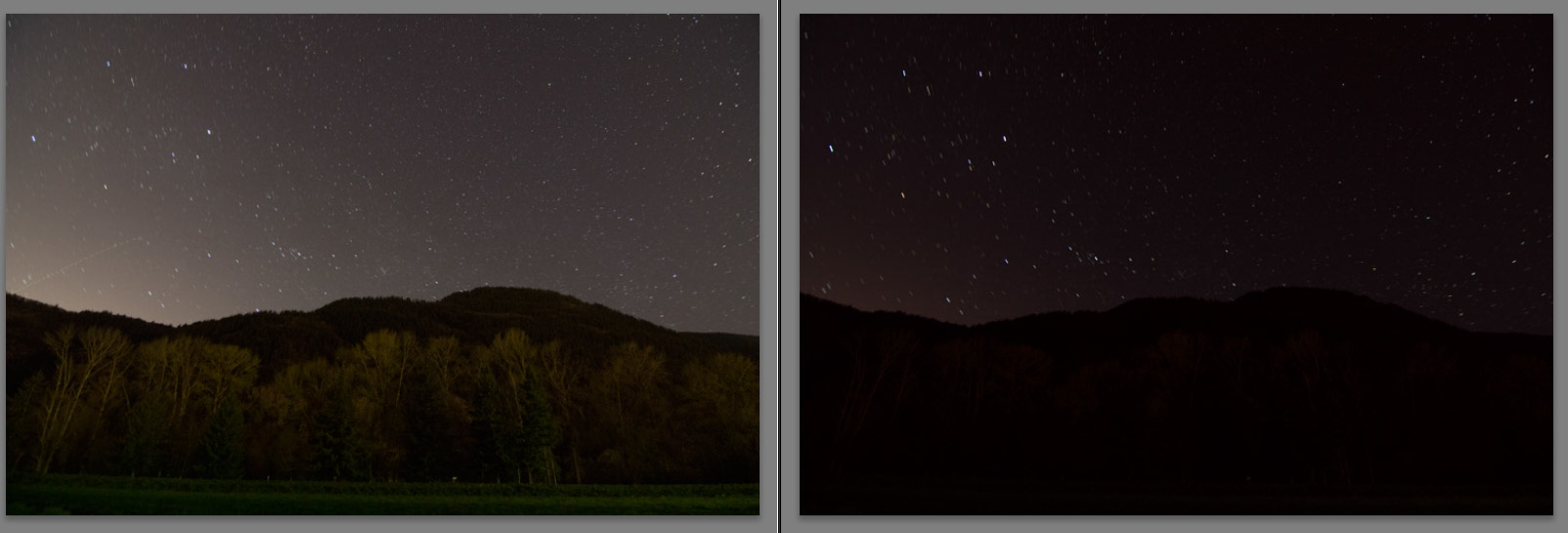
While not long enough to really show the star trails yet you can see that the accumulation of light pollution and noise is having an adverse effect on the long exposure more than the composite image. Also at some point continuing on in bulb mode the foreground would become over exposed.
In this next image I’ve stepped it up to 18 exposures of 20 seconds for a total of 6 minutes which is still too short a time to create a dramatic image but this can easily be extended further by just adjusting the number of images to be ‘stacked’
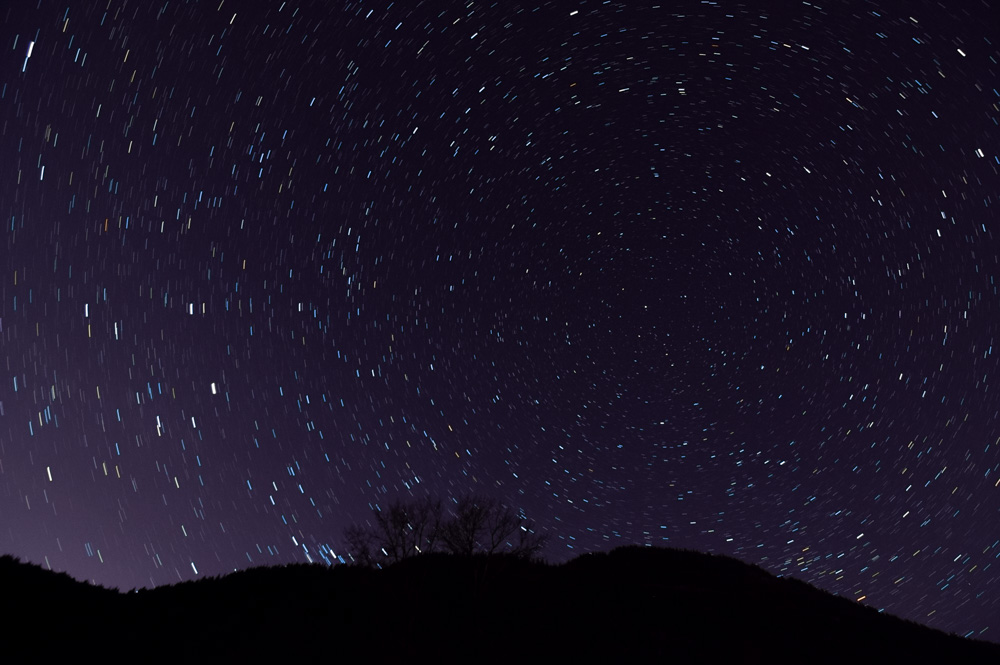
If I get a clear night in the near future I will update this with a longer capture. The point though is that there are tools built into these cameras that are waiting for creative exploration. As a side note the image that is generated can be a RAW file and tends to have less noise due to the combining of the images. Also generating images in this way doesn’t require dark frame subtraction and the time penalty that entails. Although the dark frame count down timer on the top LCD is a nice touch its like waiting for water to boil and is lost time. And of course you aren’t burdened with dealing with a whole pile of files on your card and in your computer which is a very film like notion.
5 comments | tags: Digital, long exposure, Pentax, star trails | posted in Cameras, Photography, Uncategorized
Dec
10
2015
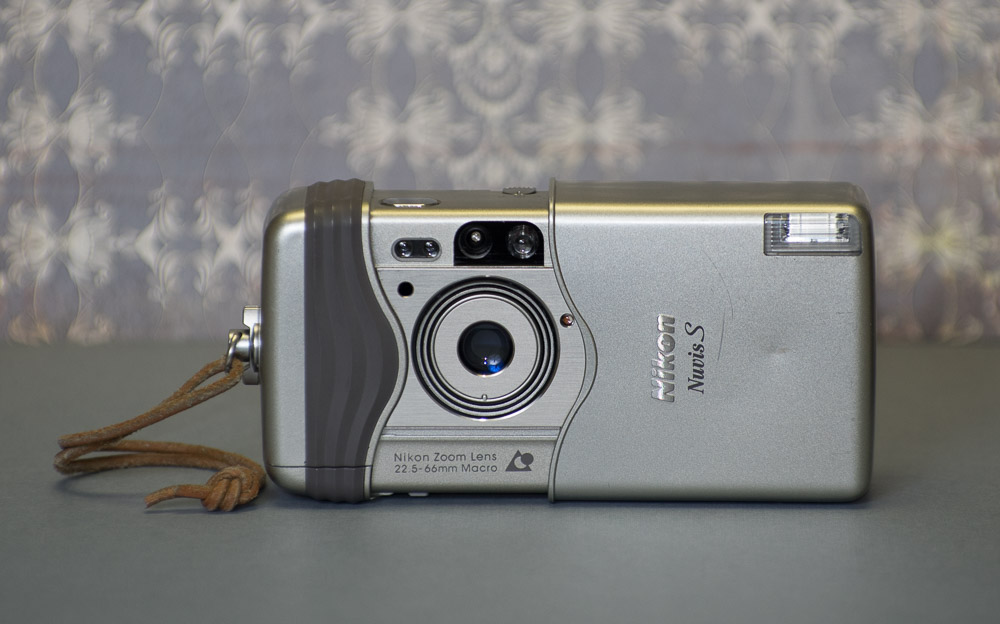
I don’t make all my decisions around what camera to use based solely on their photographic ability, if that were the case I would have settled on a few really good cameras and that would be the end of it. I also use some cameras just because they are interesting or were a technological milestone. The APS film format was a dead end that a few camera makers went down but not for long with the advent of digital cameras right behind them. Although when they did make APS cameras they were more innovative than they had been for years and some of the design touches made it into the digital camera realm. The Nikon Nuvis S though is pure APS design and it stands out for it. Taking the idea of the clamshell a step further than a simple lens cover when closed nothing but the flash remains exposed.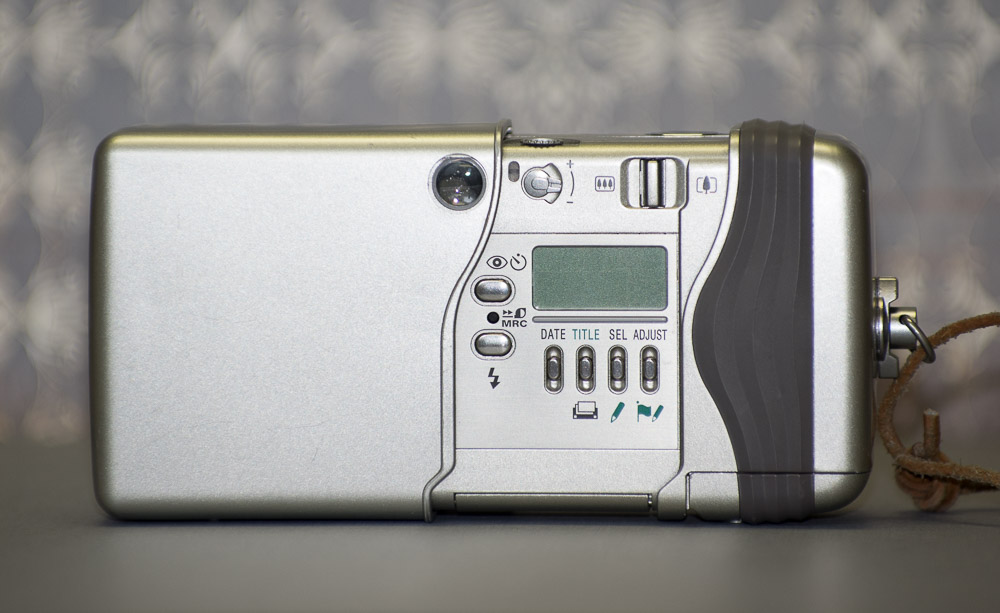
The camera is made from metal instead of plastic and sports a 22.5-66mm lens with 6 elements (two of which are aspherical). That works out to a focal length equivalent to 28-83mm on 35mm film which is nice and wide just what I like.
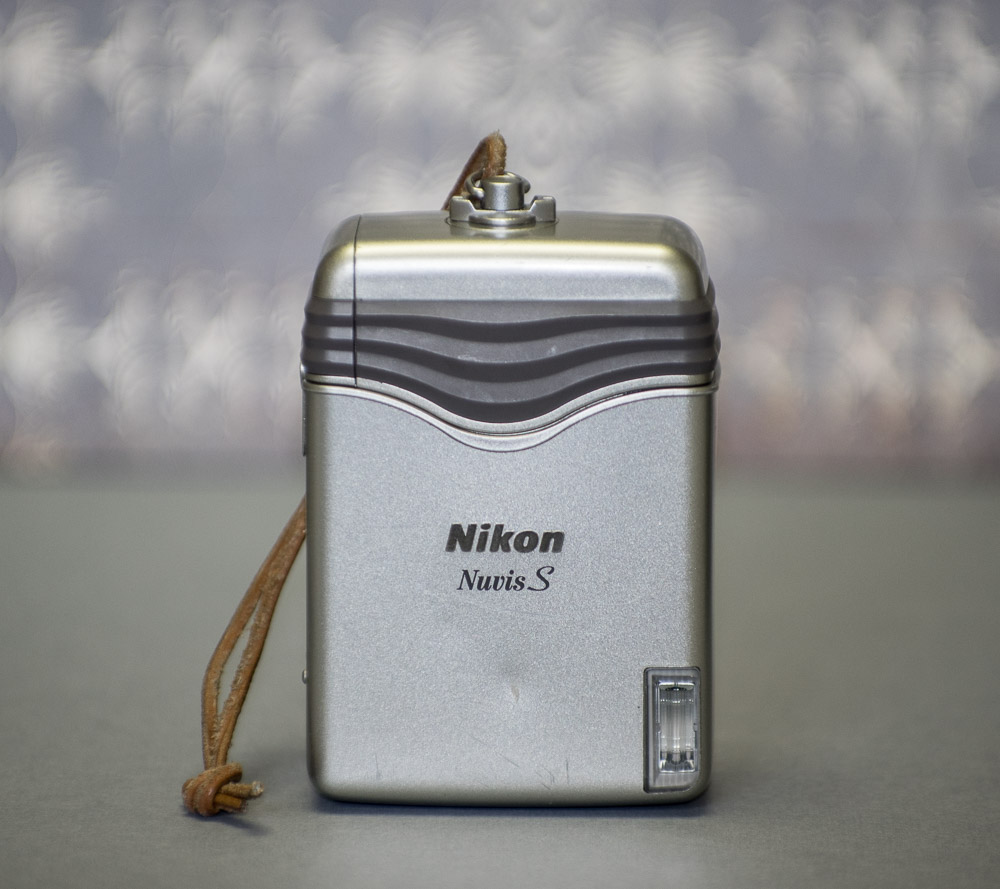
It is a nice looking camera both closed and open, and that’s some bad outdated APS film.
no comments | tags: Aps film, Nikon | posted in Cameras, Photography, Uncategorized
Nov
28
2015
After a few years left in the smartphone backwoods using an aging HTC evo 3D I decided it was time for a new phone. Its been a self imposed exile after taking tens of thousands of cell phone pictures I largely gave it up in favour of shooting more film. Well a lot has transpired in the intervening years as far as cell phone image capture and its reached a sweet spot of quality and features. That’s what brings me to this point writing this post on the phone that I also took the following images with. I haven’t exported any images to a computer yet but so far on the phone they look good. The G4 ended up being my pick because of its RAW capture and manual settings as well as the image stabilized f1.8 lens. I didn’t only want the manual overrides for image making but as a quasi lightmeter for my old film cameras, yes i know there are apps for that. In the future I will go into more detail for now I’m just learning its capabilities and shortcomings. These images were captured in RAW and processed with Snapseed but are only small representations of the larger files.












no comments
Aug
1
2015

I enjoy using my diminutive Pentax Q7 and find that it lends itself well to creating images that have a film look in particular black and white conversions. In this case though I wanted to envoke the look of film shot in bright summer light. Perhaps film that is now a little out of date too. As with all Lightroom presets they should be thought of as starting points.
This was created with Lightroom 5.7 and can be downloaded here Q summer film
1 comment
Jul
26
2015

I was kindly lent a Contax G1 and three lenses and took the opportunity to shoot four rolls of film with it. The first thing you notice on picking it up is that it is an absolute gem. The level of finish is exceptional it feels like it was milled out of a solid block of titanium. It does have a nice rubberized grip but is a little too heavy to easily use one-handed. The autofocus works well as long as you ensure that you set the center focus point on the subject. That’s fine for individual portraits but it caught me out a couple of times when it focused between two people despite my efforts. Additionally the focus is the loudest aspect of the camera drowning out the shutter and film advance although not really achieving objectionable levels. It’s too bad because even using manual focus doesn’t mitigate the noise as it works by ‘fly by wire’ and focuses to the distance you set on the top dial. Strangely when you change to manual focus rather than providing you an indication of the actual distance in the viewfinder as it does with autofocus it just gives an uncalibrated indication of whether you are setting focus in front or behind what the autofocus has determined. That and the fact that the manual focus dial is easily knocked inadvertently I would suggest that leaving it in AF mode is the order of the day. Moving on to the viewfinder there is good news and bad news. The good news is that it adjusts it’s field of view depending on the lens that is mounted. To achieve this though it would seem that it was necessary to engineer it much like the viewfinder you would see on a zoom point and shoot and the result is that it is a small viewfinder that is sometimes hard to bring quickly to the eye, like is possible with a fixed lens rangefinder, that’s the bad. Additionally on the good side of things the viewfinder automatically changes its masking to adjust for parallax and focus.
Okay that’s all well and good, it’s a beautiful piece of camera engineering but what about the lenses? Well if the camera is a gem the lenses are diamonds. The standard lens the Zeiss T* Planar 2/45 is perfectly matched and exquisitely built. With the camera I was also lent the 28mm f2 Biogon and 90mm f2 Sonnar two lenses equally as beautiful. The legendary Zeiss T* coating is evident on all the lenses. In the center of the lens barrel is the aperture ring with a nice solid detent for each setting. Because the manual focus is done at the body there are no other external moving parts to the lens. The lenses are as good optically as they are aesthetically pleasing. The rendering of out of focus areas (bokeh) is terrific giving the images a strong three dimensionality. Unfortunately the limited number of aperture blades shows in the background highlights as hexagonal shapes rather than nicely rounded as is possible with more or curved blades. All three lenses have exceptional sharpness from corner to corner they may very well be the best film camera lenses I’ve ever used.
A few other features of the camera are its top shutter speed of 1/2000 of a second it has +-2 EV exposure compensation and will do three frame bracketing. You do have to be careful if you override the DX reading system to set a manual ISO as it does not revert back, it can be very easy to accidentally leave it at an incorrect setting (Something to remember) Also it’s not impossible to forget to remove the lens cap although you will get a very wrong exposure as the metering is TTL which is another amazing piece of engineering. It actually uses the light reflected off the shutter curtain to determine exposure.
One thing about one camera: It was the first ever autofocus rangefinder camera
Here are some of my first sample images there are more to come after I develop more film
no comments | tags: Contax, film camera | posted in Cameras, Photography, Uncategorized
May
27
2015
Originally I hadn’t intended to take the K-3 and the DA* 16-50 and DA*50-135 but it was a terribly rainy day and if its going to pour then this is the gear to take. Besides the weather sealing the lenses are great optical performers and the K-3 is an amazing photographic tool with more technology packed into it than you can use in a day. More images from this day trip are here K-3 Signs
Update: Pentax has announced and is soon to release an updated K-3II with even more features. I’m particularly interested in the new pixel shift technology.
no comments | posted in Cameras, Photography, Uncategorized
Mar
13
2015

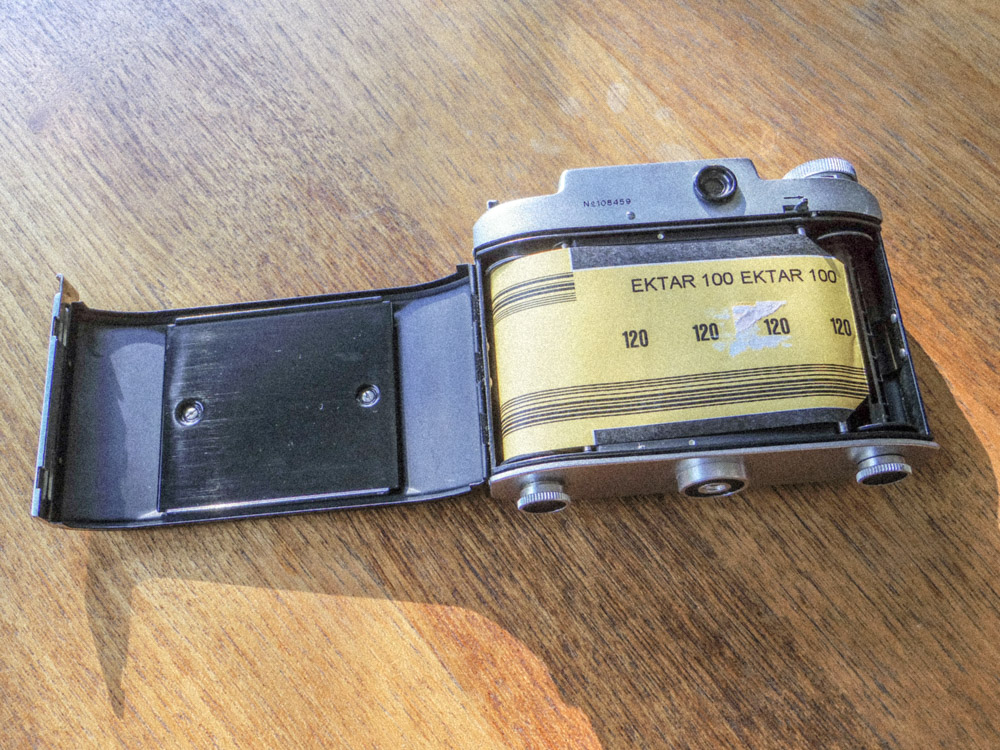
I’m not sure if it was the cold weather or the lack of use of the camera but I found after I developed my film that the shutter had been stuck open and closed a couple times during my resent use of it. Thats a shame because it’s an otherwise great camera. The coupled rangefinder is nice to have and not that common with folding medium format cameras.
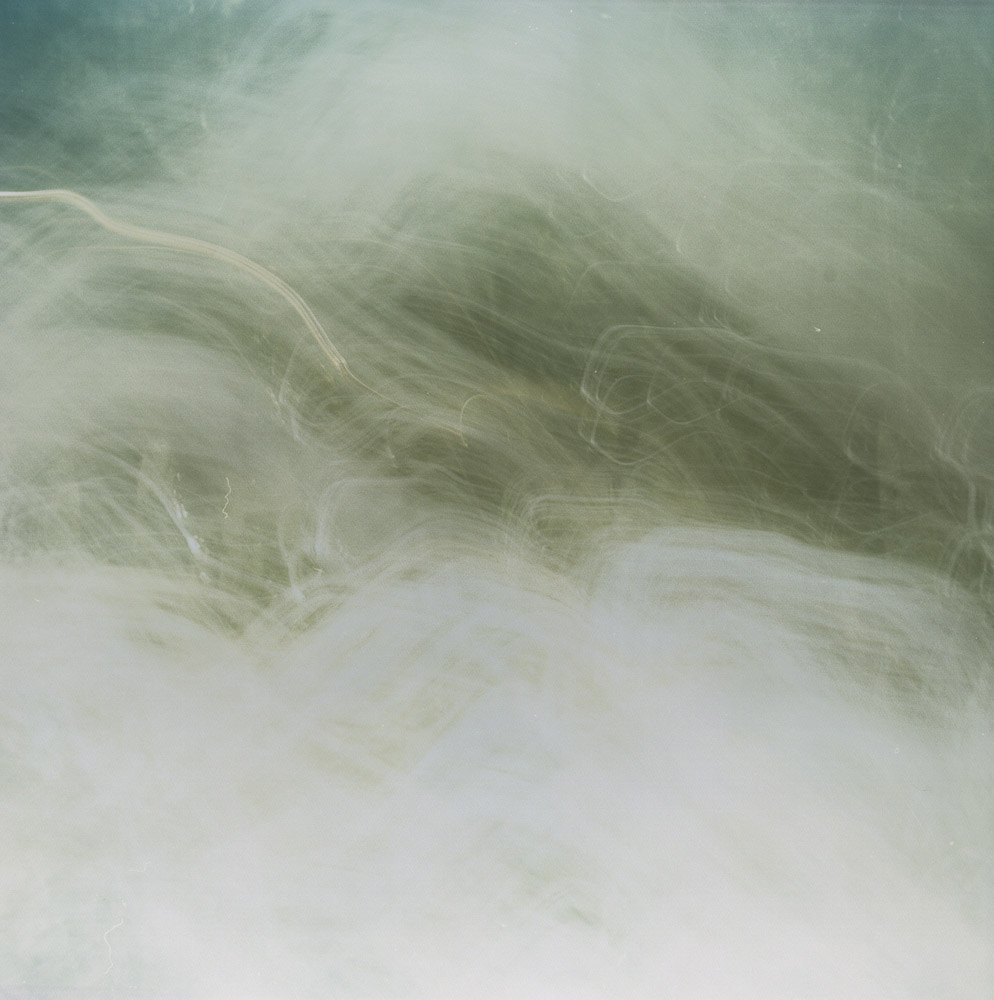
More about this camera from me here Wester Autorol
One thing about one camera: The Wester Autorol weighs just over 700grams or slightly less than a Nikon D750 or 4 Pentax Q7’s it’s neither small nor light
1 comment
Feb
19
2015
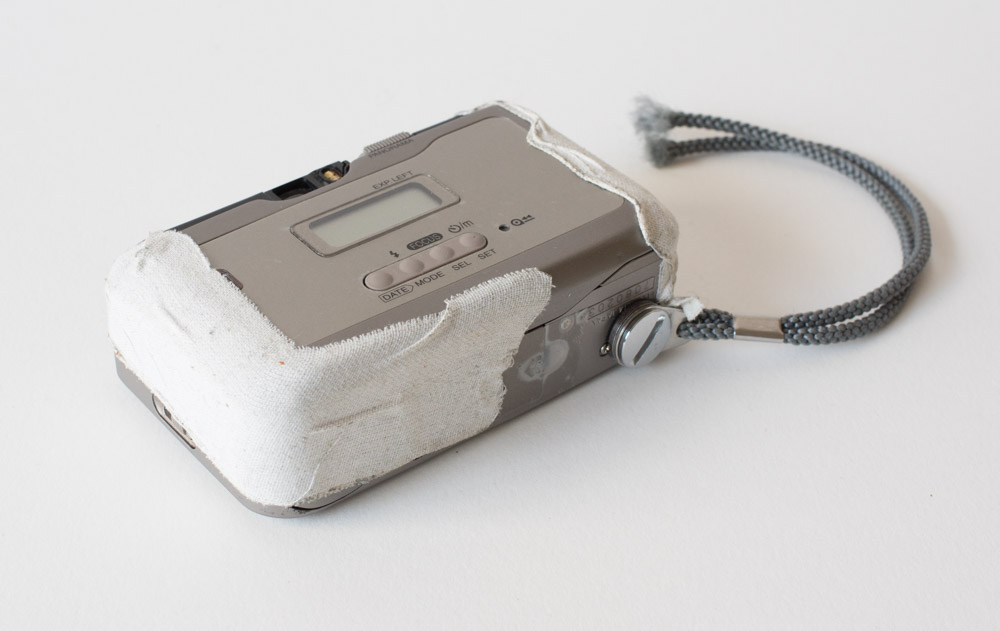
This has to be one of the best little cameras even though my copy looks like its been thrown off a cliff. It’s missing pieces has dents and requires tape to keep everything in place the strap has been cut but it works like a charm.
As a focal length 28mm allows a lot to be included in the frame this encourages the photographer to get up close to the subject. When doing that it also makes shooting in vertical orientation a nice variation.
3 comments












